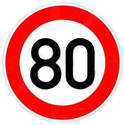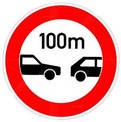Safety
For your own safety, please comply with the following three basic principles of safe driving in the tunnel.
 | STICK TO THE SPEED LIMIT |
 | KEEP A SAFE DISTANCE |
 | OBSERVE THE TRAFFIC LIGHTS |
What to do in the event of an accident or breakdown
- Stop the vehicle in the lane
- Turn off the engine
- Switch on your hazard lights
- Contact the control room using the SOS call box
What to do in the event of a fire in the tunnel
- If your car starts to burn, drive it out of the tunnel, if at all possible
- If you cannot drive out of the tunnel, stop to one side, turn off the engine and immediately leave your vehicle
- Open the SOS box (this sends an alarm signal to the control room)
- Use the emergency equipment.
The company SITRASB, which operates the Great St. Bernard tunnel, was the first in Europe to be ISO 9002 certified. This certification is the culminating point of a major project to critically review the existing safety system and to develop new systems for managing traffic and providing services to customers. The initial ISO 9002 certificate, followed by the current standard, ISO 9001:2008, stands for safe tunnel transit, including in a possible emergency, and for the development of new services for customers.
Infrastructure and traffic in the Great St. Bernard tunnel are managed by the control centres “South” and “North”, which are located near the respective entrances to the galleries. These centres, which are operational 24 hours a day, centralize all information pertaining to tunnel equipment, alarm systems and emergency calls.
When the alarm is raised by a control centre, the emergency rescue team (Squadra di Pronto Intervento, SPI) is immediately alerted. This emergency unit is made up of staff specifically trained and qualified to intervene in situations with a high fire risk.
The SPI is on duty 24 hours a day and has at its disposal a fleet of specially equipped fire-fighting and first-aid vehicles. At the two tunnel entrances a fire truck and a light vehicle specifically designed for rescue interventions inside motorway tunnels are stationed and manned 24 hours a day.
